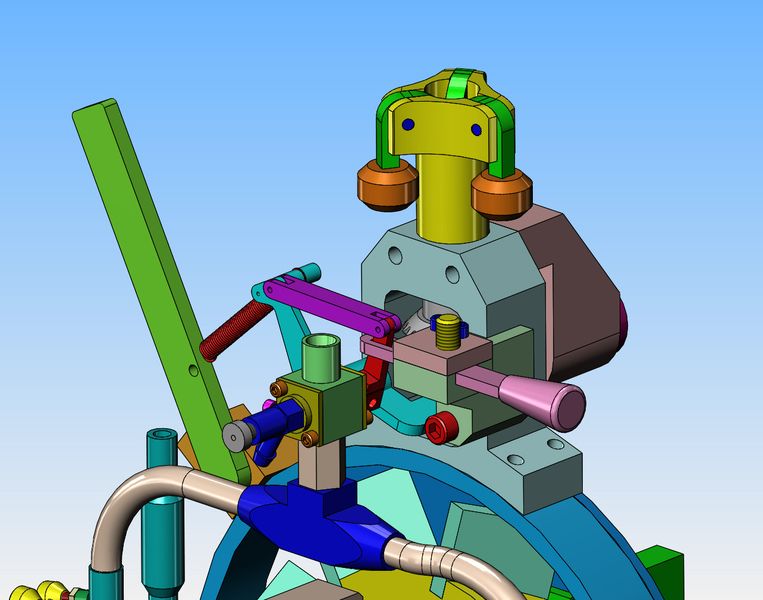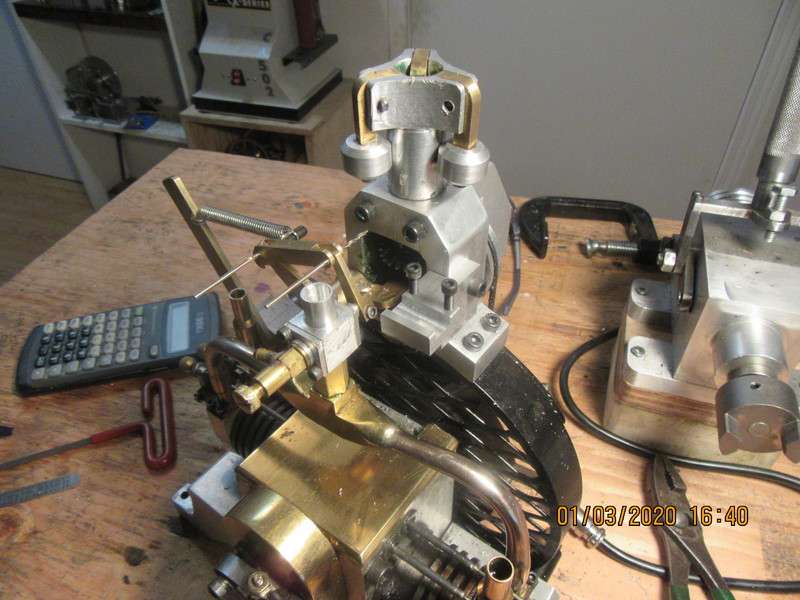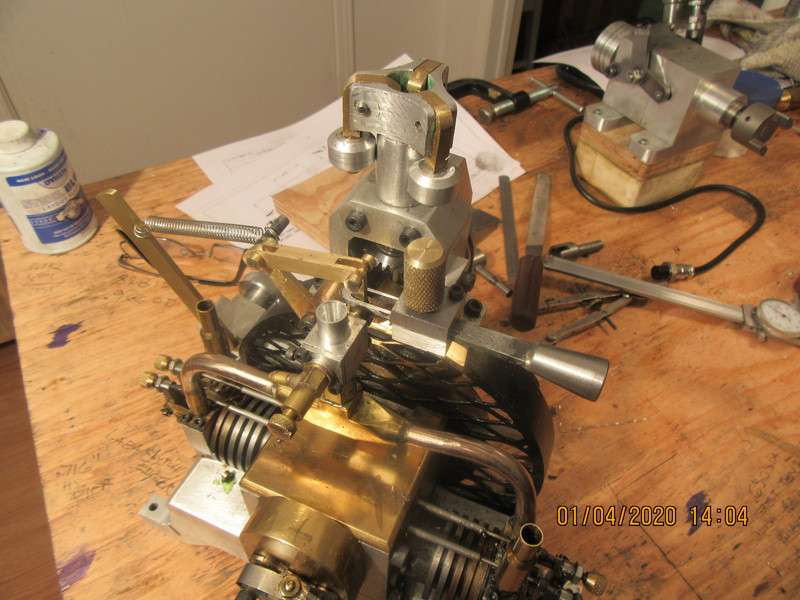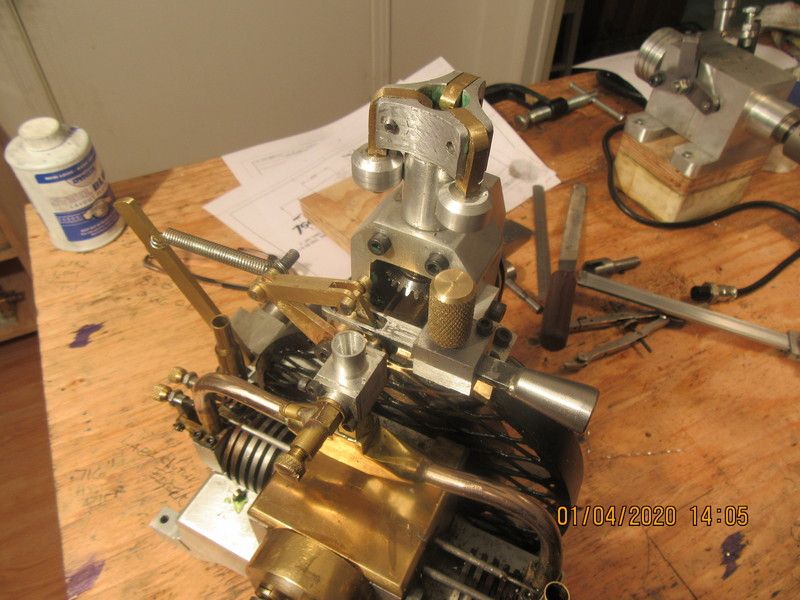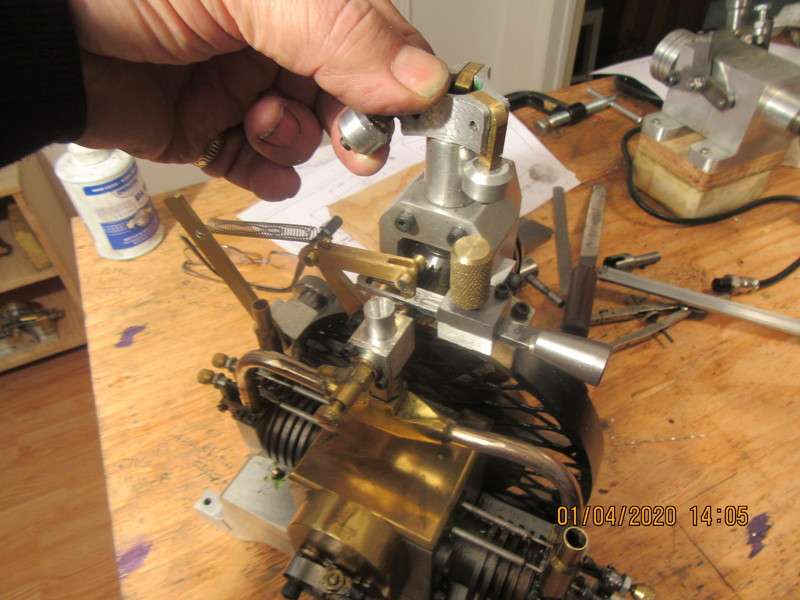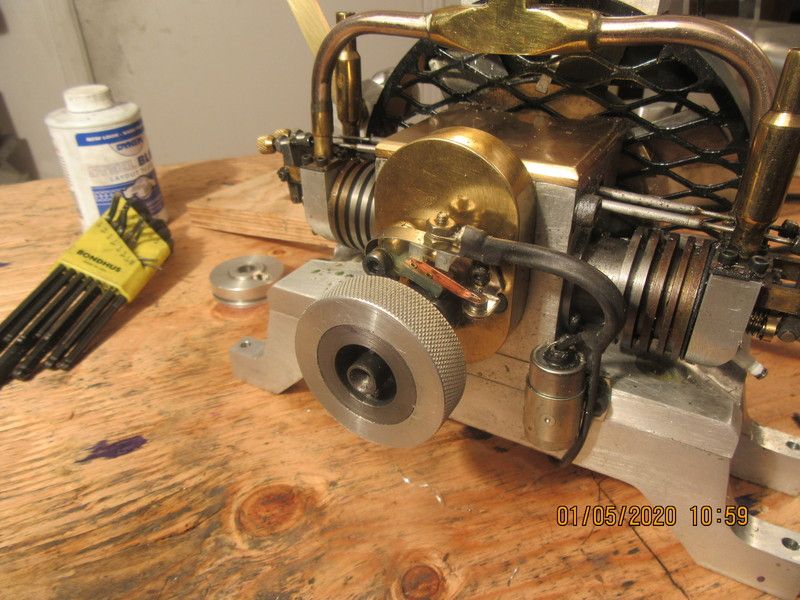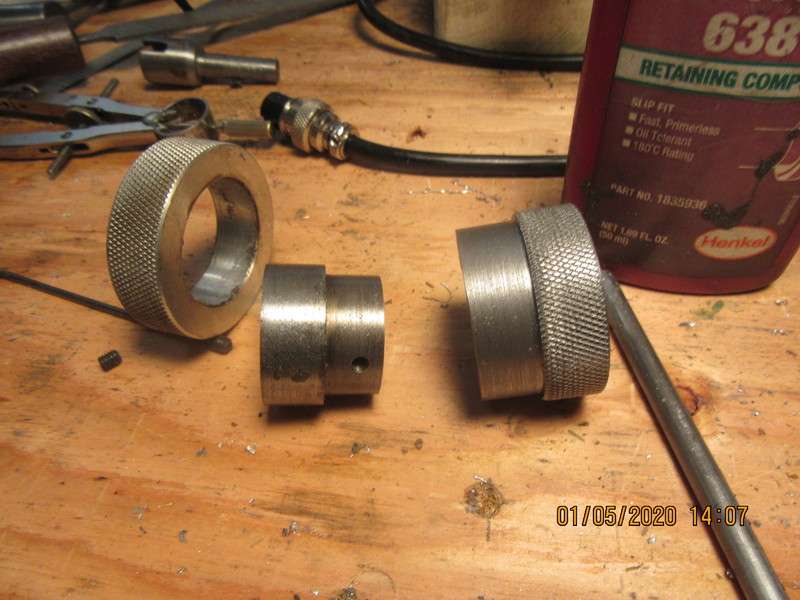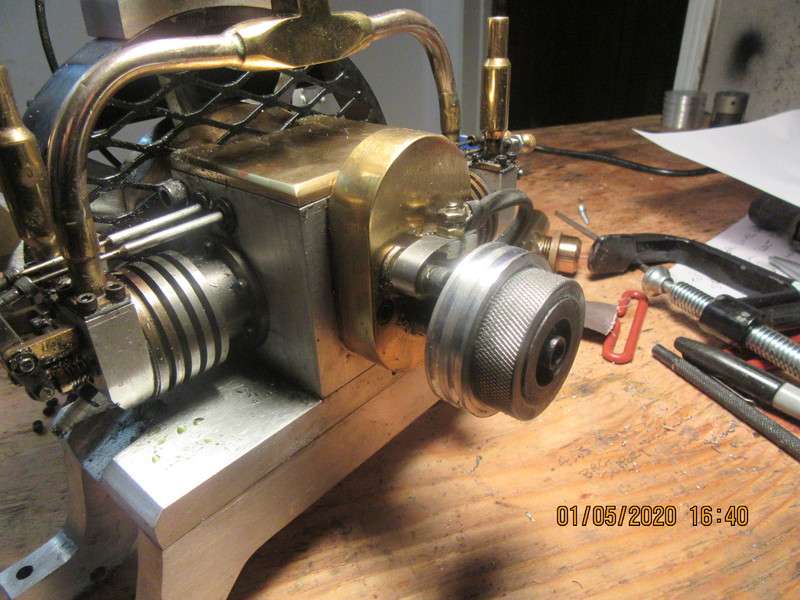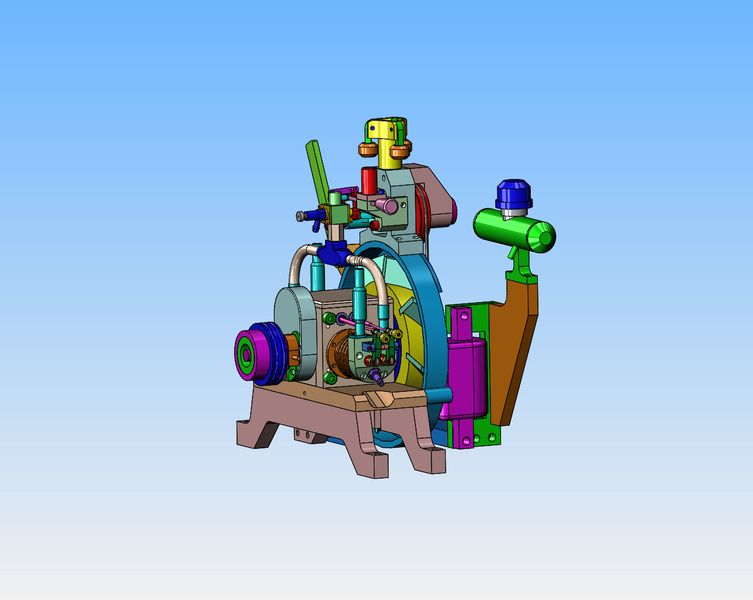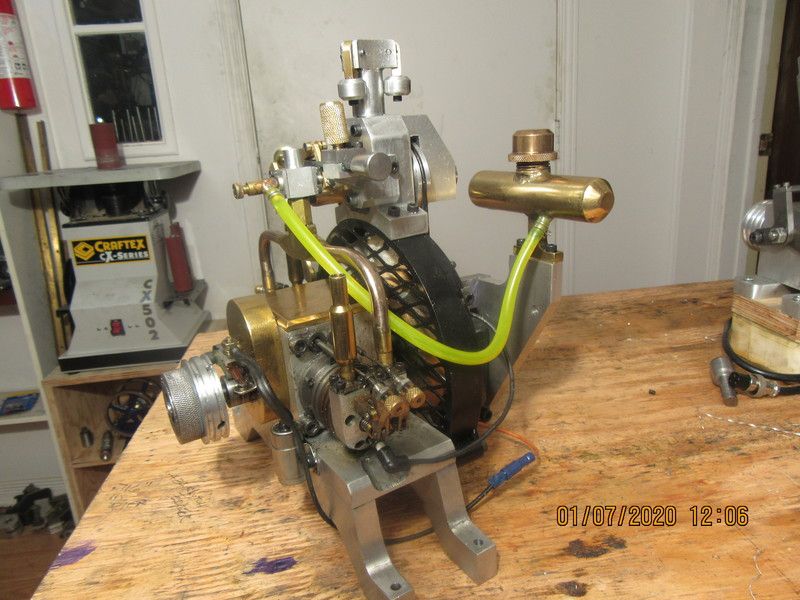This morning I made the adapter which goes between the intake manifold and the carburetor, and the link which ties the governor lever to the carburetor throttle lever. I am not really sure what I'm doing here, and the more I do, the less sure I am. (That is not as unusual as it sounds!!). In the attached picture, my hand is holding the spring in tension, and the levers are pulled into what is actually a "wide open throttle" situation. As the engine runs and centrifugal force makes the governor weights swing out away from the center, it actually pulls the throttle lever against the spring tension, until the carburetor is in an "idle" position. I have to adjust the spring tension to a point where the engine will settle in and run at 2000 rpm. but not so far that the engine idles. Now, if a load makes the engine slow down, the governor weights won't have as much centrifugal force, and the spring tension will pull the lever into a more "open throttle" position, causing the engine to run faster and bring the speed back up to the magic 2000 rpm. So--The magic here seems to be my ability to adjust that spring tension so the engine runs at 2000 rpm but not any slower. However, that is only part of the equation. I also have to have the capability to completely over-ride the governor weights and bring the carburetor into a "full idle" position for starting. I THINK perhaps I need a counter spring pulling in the opposite direction to the spring I am holding, so that when it is engaged the carb throttle moves into a "full idle" position.
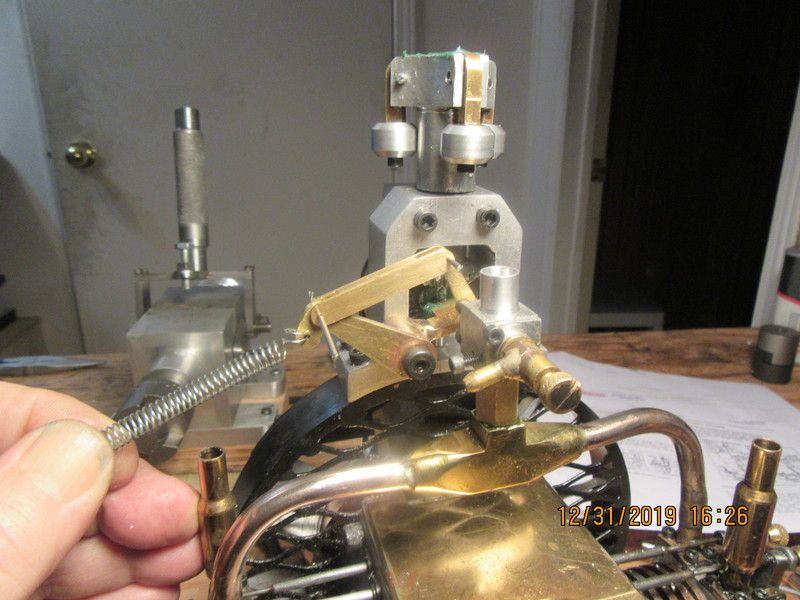






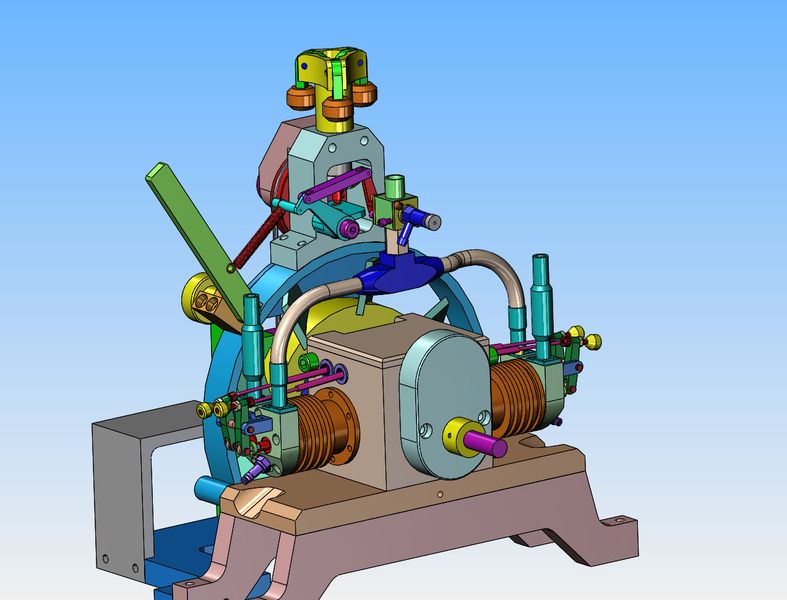
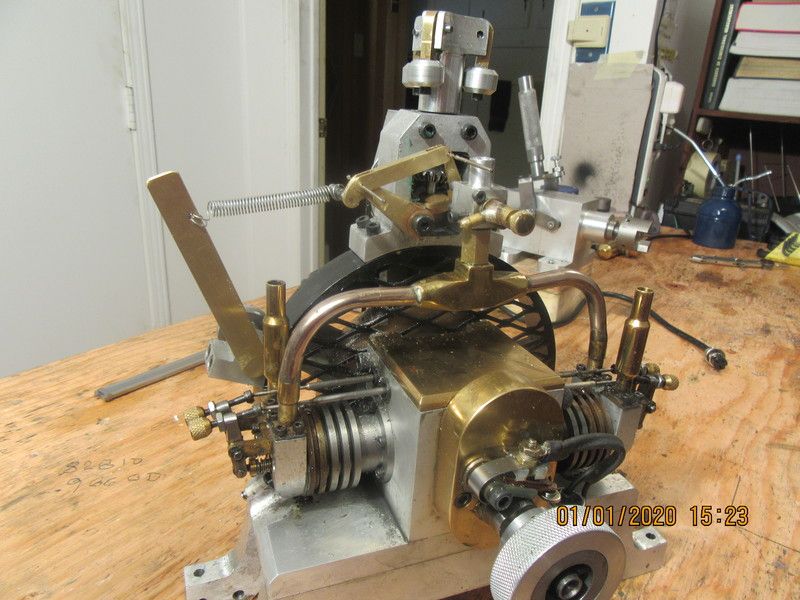
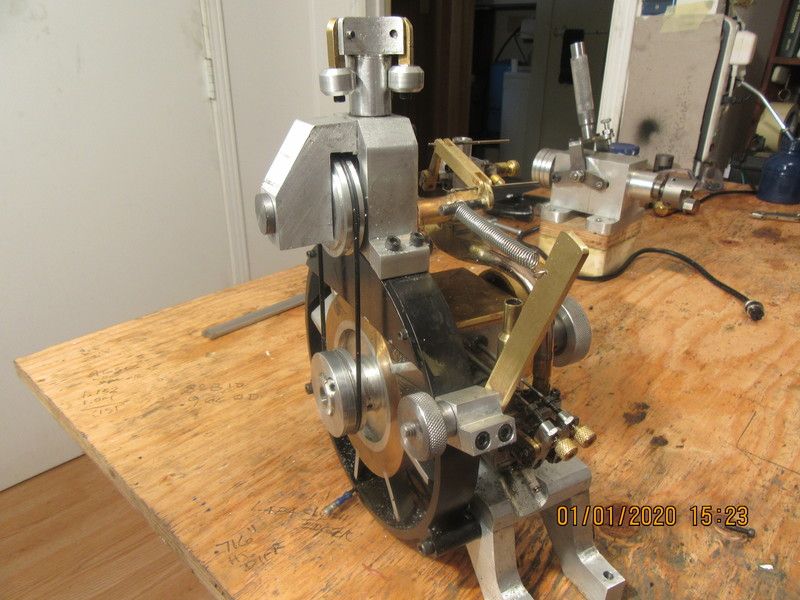






































![DreamPlan Home Design and Landscaping Software Free for Windows [PC Download]](https://m.media-amazon.com/images/I/51kvZH2dVLL._SL500_.jpg)








![Learning AutoCAD Civil 3D 2014 [Online Code]](https://m.media-amazon.com/images/I/51F3yi9fokL._SL500_.jpg)








